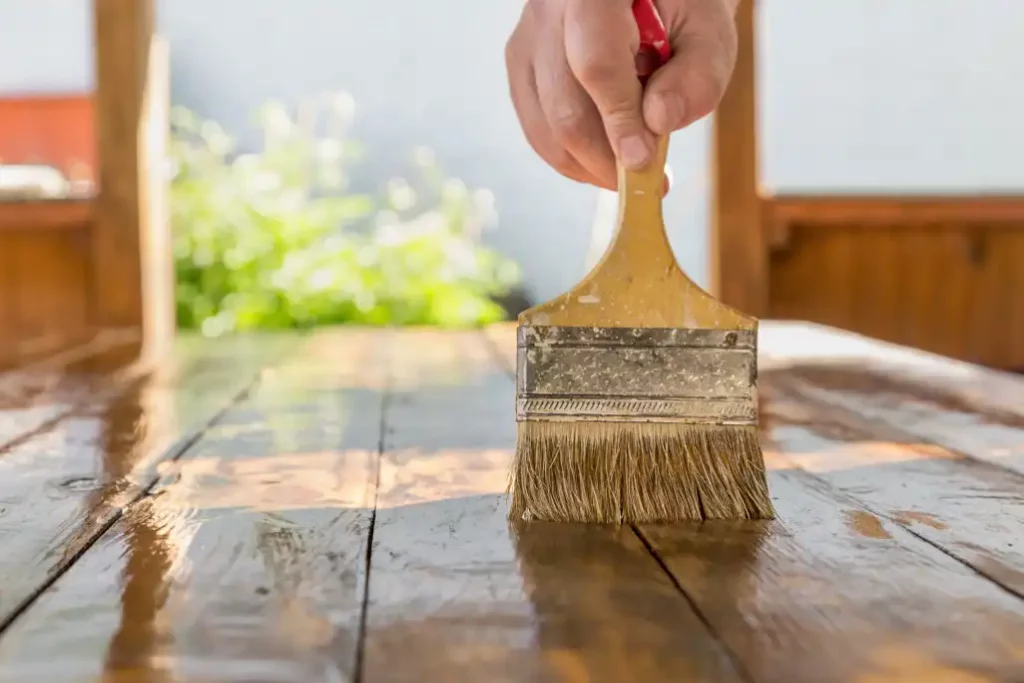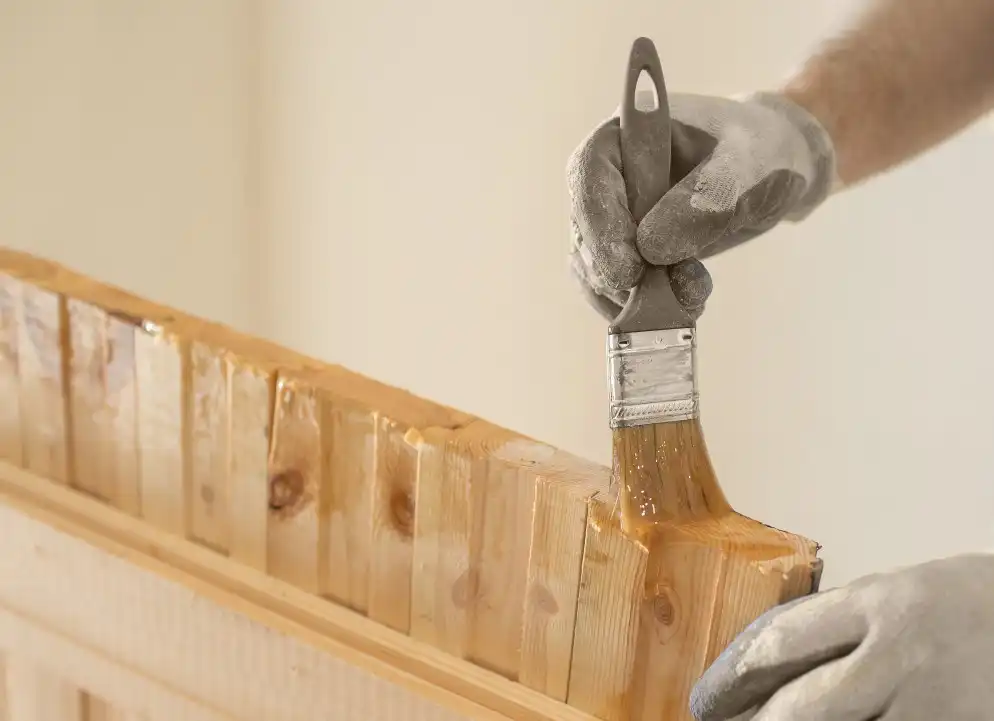Lacquer and varnish are two types of finishes applied to wood. They are used on various surfaces such as cabinets, furniture, doors, shutters, and trims. The difference between lacquer and varnish is the type of finish used. Lacquers are thin, fast-drying finishes, while varnishes are thick, slower drying finishes. Both products will darken over time.
Overview of Lacquer
Lacquers are a coating applied to a wooden surface to provide a thermoplastic layer. As these layers of solvent coating begin to evaporate, they seal the surface’s pores. To make these coatings last, manufacturers will often blend them. The thickness of the lacquer will dictate the evaporation rate and cost. The end product of using lacquer is a hard finish that can be polished to exude varying degrees of sheen. The product will be durable but may scratch over time. Use it in high volumes and apply only in a well-ventilated area.

Overview of Varnish
Varnish is a sealing liquid that is used to coat material. This liquid is formed out of a resin that which, when dry, will create a hard transparent film. These varnishes are manufactured through a process of blending various resins. The trick is as the varnish begins to dry, the solvent evaporates. What remains will oxidize and form a durable transparent film. This transparent film protects several surfaces such as wood, paintings, and decorations. Aside from protection, the varnish can also make wooden floors, interior wood paneling, and trim look glossy.
Chemical Properties
The chemical properties of both Varnish and Lacquer are similar but not the same. Varnishes are designed with identical compositions; they, however, differ when it comes to pigments. Lacquer is designed to form a transparent finish. It is more complex than varnish and can be clear or colored depending on your product. The end product is a rugged and durable finish that can be further polished.
Different uses
Lacquer offers excellent durability for high-end furniture. The finish provides a typically modern aesthetic that is impervious to water. The finish dries very quickly, and even as it ages, it won’t become foggy. If you need to protect the look of expensive wood, then this option is optimal because it won’t yellow with age. In the home, accidents can happen, which will protect well against liquids and require very little maintenance.
Varnish is popularly used to finish untreated wood. It can work on stained wood, but it provides a distinctive tone. This tone will help ensure that the grains in the wood are beautiful and visible. These products will give a naturally glossy finish that you can adjust for the required sheen level. You can use it when you need to protect the wood against harsh elements such as acid, alkali, and UV radiation. It’s best for the outdoors because the color provided won’t fade. You can also use it for naturally beautiful wood because it is colorless. It can work well as a topcoat or finish coat.
Materials
Lacquer can be applied using a sprayer. This tool is helpful because the product is naturally thin. This method will help to provide an even and intense shiny gloss.
Varnish has a thicker consistency. Therefore, it needs to be applied with a brush. Using long-broad strokes, you need to move quickly to work before it dries. For this reason, the end product will be closer to a matte finish and will be less transparent.
Drying time
Lacquers dry very quickly. You can expect the product to have mostly evaporated within 5-10 minutes. This timeline is based on the area being well ventilated. If the airflow in the room is restricted, it will take at least 15 minutes to dry.
Varnish
Given that varnish has a thicker consistency, it should take a minimum of 6 hours to dry. This timeline is based on the environment. It can take at least 24 hours to dry in some cases fully. Ensure you let each coat dry thoroughly before adding another.
Cleaning up
To clean up lacquer, you need to sweep a small area off the surface using a solvent-based furniture cleaner. This should loosen the consistency of the lacquer and make it easy to wipe off with a cloth. It will dry fast; therefore, it’s essential to clean it immediately.
As varnish is thick, it will be challenging to achieve a good lather while cleaning. To successfully clean up the varnish, you will need mineral spirits. Dip the brush into the solution and then wash with soap and water.
Finishes
The finish of the lacquer will be thin and transparent. This makes it look naturally beautiful. This finish will work to preserve the original look of the wood. Maintaining the grain will help make it difficult for anyone to notice the finish on the wood.
The finish of varnish is more matte than transparent. It works to slightly alter the grain’s end product from its original shape. It is best to use this option for surfaces that require more protection than beauty.
Varnish or Lacquer for outdoor furniture?

Given that outdoor furniture will be exposed to harsher elements, it is advisable to use varnish for a finish. This product will help to ensure that the outdoor furniture is protected against acid, alkali, and UV radiation. It is thicker and less shiny, but it will do better than varnish when protecting outdoor furniture. Lacquer has better water resistance and is shinier but has less UV resistance.
Main Difference between Lacquer and Varnish
The critical variance between Lacquer and Varnish is the composition. Lacquer is created through a solvent base. Varnish is designed with more solid materials. The two compositions form their consistencies, which is why lacquer is thinner than varnish. It is also less foggy and more transparent. The drying time for lacquer (10-15 minutes) is also much shorter than varnish (6-24 hours).
Similarities between Lacquer and Varnish
These two products can make wood shiny. They offer protective qualities that work well depending on the environment.
- 6 Tips To Craft The Perfect DIY Woodworking Project - August 1, 2022
- Six Reasons You Need an Air Filter In Your Wood Workshop - August 1, 2022
- American made wood lathes - May 26, 2022
